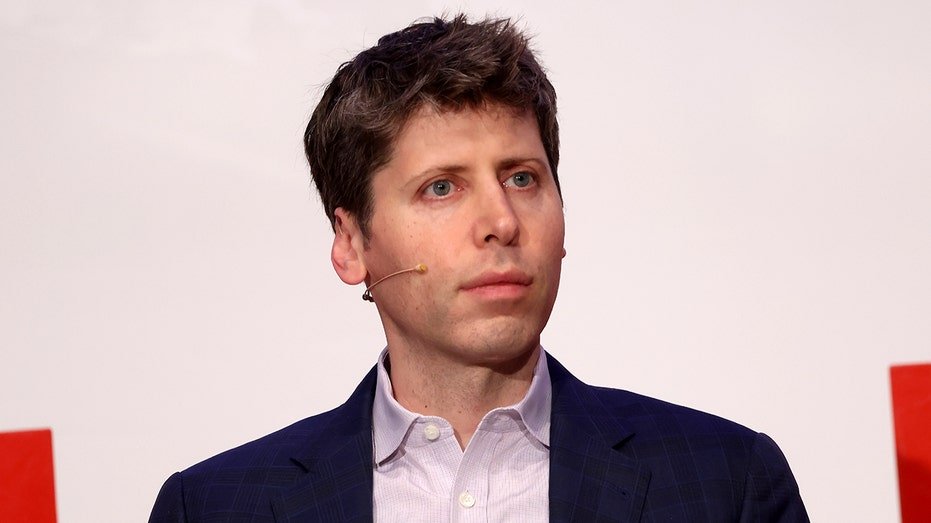Business
Data Sanity In An AI World: How To Drive Real Business Value

In an industry consumed by the race for artificial intelligence, companies are scrambling to avoid being left behind. The fear of missing out, however, leads many to chase flashy trends while ignoring the fundamentals, a practice one industry veteran calls “insane.”
Stanislav Petrov, a senior data scientist at Capital.com with over a decade of experience, argues that the key to success isn’t adopting the newest, most hyped model, but fostering a culture of “data sanity.” For businesses, this means prioritizing clear goals and quality data over the allure of the AI bandwagon.
The challenge is significant. According to a 2024 report from Alation, a staggering 87 percent of employees cite data quality issues as a primary reason their organizations fail to meet data and analytics objectives.
“The central paradox of the current AI boom is our obsession with results while neglecting the source” Petrov told me. “Despite all the excitement, the most critical factor for successful AI or data science projects remains the quality and relevance of input data — but since that’s the unsexy and hardest part, it often gets ignored.”
To counter this, Petrov champions a simple but rigorous framework before any project begins: What is the business goal? What is the potential business impact? And do we have the data to make it happen?
“If those aren’t clearly answered, we don’t move forward,” he said.
A Blueprint for Impact
Petrov points to developing a Customer Lifetime Value, or CLV, model as a prime example of this philosophy in action. The goal isn’t just to build a predictive algorithm, but to solve a core business need: optimizing marketing budgets.
“The goal is to understand the projected performance of the campaign or ad creative in the early stages and adjust spending accordingly,” Petrov said. He noted that such models are crucial for modern automated strategies, like value-based bidding on platforms like Google Ads, which rely on predicted user value.
While the current AI era is dominated by complex neural networks, Petrov said that for structured data problems like CLV, established methods often work best.
“A gradient boosting approach works well for structured data,” Petrov said, adding the crucial caveat: “Of course, you need to know what you’re doing and understand how to tune hyperparameters and choose a proper loss function based on your target distribution.”
The final, and perhaps most important, step is ensuring the model is actually used. He emphasized that impact measurement often requires sophisticated techniques like causal impact analysis to prove a model’s value when simple A/B tests are not feasible.
“The value of such a model lies not only in its technical merit but in its ability to influence real decisions, scale across systems, and adapt to business needs,” Petrov said.
Navigating an Evolving Landscape
This pragmatic approach is essential as data scientists face mounting headwinds, particularly from new privacy regulations and the long-heralded death of the third-party cookie.
Google is proceeding with its plan to phase out third-party cookies for all Chrome users, a move that a study from Lotame found 62 percent of marketers believe will negatively impact their advertising.
Petrov sees this not as a single event, but as a long, incremental process that requires adaptation.
“One major shift is leaning into incrementality-based frameworks and media mix modeling to understand the true contribution of channels, especially when direct path attribution breaks down,” Petrov said.
This forces tighter integration between data and marketing teams, relying more on techniques like geo-testing and probabilistic modeling.
The Mindset That Defines a Leader
When it comes to building teams capable of navigating these challenges, Petrov believes the differentiator between a junior and senior data scientist isn’t a single skill, but a mindset centered on ownership.
“While juniors may excel at executing well-scoped tasks, seniors are those who proactively define problems, engage stakeholders, and see solutions through to delivery and iteration,” he said.
He described a crucial realization for any professional looking to grow: “A key mindset shift is realizing that ‘nobody will come’ to tell you what to do or what is right. You must take initiative, make your own decisions, and take full responsibility for the outcomes.”
For Petrov, this lesson came with experience.
“Writing code isn’t the hardest part of the job, even if it’s not always easy,” he said. “The real challenge is integrating that work into a product, aligning it with business needs, and convincing stakeholders of its value.”
This philosophy of pragmatic ownership extends to building the infrastructure that supports models after they launch, a field known as MLOps. Rather than building overly complex, “full-featured platforms,” Petrov advocates for right-sized solutions.
“A robust system doesn’t always mean the most complex one,” he said. “In many cases, simple, well-scoped logging and alerting tied to key model outputs and drift indicators can cover 80 percent of what’s needed.”
By focusing on real problems, quality data, and tangible impact, Petrov’s message is clear: in the age of AI, a dose of sanity might be the most valuable algorithm of all.
Business
Databricks AI Chief to Exit, Launch a New Computer Startup

(Bloomberg) — Naveen Rao, the head of artificial intelligence at the $100 billion startup Databricks Inc., is planning to leave his position to launch a new venture making a novel type of computer, according to a person familiar with the matter.
A spokesperson for Databricks confirmed that Rao is transitioning to an advisory role at the company, and said that Databricks is planning to invest in his new startup. The spokesperson declined to disclose the size of the investment.
Rao has also held early talks with other investors about backing the new company, which would focus on building a next-generation computer to address the rising costs of AI computing power, said the person familiar with the conversations, who asked not to be named discussing private information.
Rao declined to comment on his plans for the new company.
Rao is a serial entrepreneur who sold his data and AI analytics startup MosaicML to Databricks in 2023 for $1.3 billion. MosaicML had raised about $30 million from investors including Maverick Ventures, Lux Capital and DCVC. Before that, Rao co-founded Nervana Systems, a machine intelligence platform, which was acquired by Intel Corp. in 2016 for about $350 million.
Given Rao’s track record, the new venture could attract significant investor interest at a lofty valuation. He would also join a wave of prominent tech executives who’ve launched startups, including former OpenAI Chief Technology Officer Mira Murati, whose company Thinking Machine Labs was last valued at $10 billion, and ex-Salesforce co-CEO Bret Taylor, whose two-year-old AI startup Sierra was also recently valued at $10 billion.
Databricks recently raised $1 billion in a funding round that made it one of the country’s most valuable startups. The round was co-led by Andreessen Horowitz, Insight Partners, MGX, Thrive Capital and WCM Investment Management.
More stories like this are available on bloomberg.com
Business
Rent the Runway Adds AI Enhancements Amid Transformation

Rent the Runway is continuing to roll out new personalized recommendations and artificial intelligence (AI)-powered enhancements as part of a wide-ranging transformation of its fashion subscription, rental and resale platform.
Business
OpenAI nonprofit gains $100B stake while retaining control of AI company

NVIDIA CEO and co-founder Jensen Huang commends President Donald Trump’s A.I. agenda and outlines what the country’s job future will look like on ‘Special Report.’
Artificial intelligence giant OpenAI on Thursday announced its nonprofit parent will retain control of the company while also gaining an equity stake worth more than $100 billion.
The move will allow OpenAI to raise new capital while also making its nonprofit parent company “one of the most well-resourced philanthropic organizations in the world,” according to Bret Taylor, chairman of OpenAI’s board.
OPENAI TEAMS UP WITH WALMART TO TRAIN MILLIONS OF WORKERS IN ARTIFICIAL INTELLIGENCE
“This recapitalization would also enable us to raise the capital required to accomplish our mission — and ensure that as OpenAI’s [public benefit corporation] grows, so will the nonprofit’s resources, allowing us to bring it to historic levels of community impact,” Taylor said in a statement.
In this photo illustration, the OpenAI logo is seen displayed on a smartphone screen. (Thomas Fuller/SOPA Images/LightRocket via Getty Images / Getty Images)
OpenAI and Microsoft also said in a joint statement on Thursday that they signed a non-binding memorandum of understanding (MOU) to shape their next phase of partnership and are actively working to finalize a definitive deal. The companies said they are focused on building “the best” artificial intelligence tools that are also safe.
OPENAI CEO SAM ALTMAN WARNS OF AI FRAUD CRISIS ‘VERY SOON’
“OpenAI and Microsoft have signed a non-binding memorandum of understanding (MOU) for the next phase of our partnership,” the two companies said in a joint statement Thursday afternoon. “We are actively working to finalize contractual terms in a definitive agreement. Together, we remain focused on delivering the best AI tools for everyone, grounded in our shared commitment to safety.”

The Microsoft headquarters campus in Redmond, Washington. (iStock / iStock)
Microsoft has reportedly invested around $13 billion in the ChatGPT creator since 2019.
A MAJORITY OF SMALL BUSINESSES ARE USING ARTIFICIAL INTELLIGENCE
In May, OpenAI announced it was scuttling its plan to move the company away from a nonprofit structure to becoming a for-profit company. The ChatGPT-maker created a for-profit limited liability company (LLC), which it converted into a public benefit corporation that considers the interests of shareholders as well as OpenAI’s mission. The tech giant announced at the time that OpenAI’s nonprofit would have operational control over the public benefit corporation and would be a large shareholder in it.

Sam Altman, co-founder and CEO of OpenAI, speaks during a panel discussion titled “The Age of AI” at the Technical University of Berlin on February 07, 2025, in Berlin, Germany. (Sean Gallup/Getty Images / Getty Images)
OpenAI CEO Sam Altman, who prompted the company’s exploration of moving to a for-profit structure to make it easier for the company to raise the large amounts of money for investments he thinks will be needed to achieve artificial general intelligence (AGI), sent a letter to employees at the time explaining the decision and what it means for the company.
GET FOX BUSINESS ON THE GO BY CLICKING HERE
“OpenAI was founded as a nonprofit, is today a nonprofit that oversees and controls the for-profit, and going forward will remain a nonprofit that oversees and controls the for-profit. That will not change,” Altman wrote in May.
FOX Business’ Eric Revell contributed to this report.
-

 Business2 weeks ago
Business2 weeks agoThe Guardian view on Trump and the Fed: independence is no substitute for accountability | Editorial
-
Tools & Platforms1 month ago
Building Trust in Military AI Starts with Opening the Black Box – War on the Rocks
-

 Ethics & Policy2 months ago
Ethics & Policy2 months agoSDAIA Supports Saudi Arabia’s Leadership in Shaping Global AI Ethics, Policy, and Research – وكالة الأنباء السعودية
-

 Events & Conferences4 months ago
Events & Conferences4 months agoJourney to 1000 models: Scaling Instagram’s recommendation system
-

 Jobs & Careers2 months ago
Jobs & Careers2 months agoMumbai-based Perplexity Alternative Has 60k+ Users Without Funding
-

 Podcasts & Talks2 months ago
Podcasts & Talks2 months agoHappy 4th of July! 🎆 Made with Veo 3 in Gemini
-

 Education2 months ago
Education2 months agoMacron says UK and France have duty to tackle illegal migration ‘with humanity, solidarity and firmness’ – UK politics live | Politics
-

 Education2 months ago
Education2 months agoVEX Robotics launches AI-powered classroom robotics system
-

 Funding & Business2 months ago
Funding & Business2 months agoKayak and Expedia race to build AI travel agents that turn social posts into itineraries
-

 Podcasts & Talks2 months ago
Podcasts & Talks2 months agoOpenAI 🤝 @teamganassi

